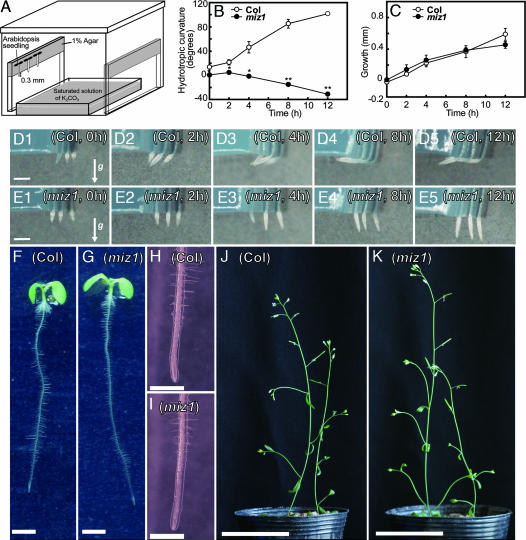Fig. 1.
Hydrotropism, elongation growth, and morphological features of miz1 and WT (Columbia) roots. (A) Experimental system for the study of hydrotropism. A saturated solution of K2CO3 in a plastic container was set on the floor of a closed acrylic chamber. A. thaliana seedlings were placed on the edge of an agar plate so that their root tips (≈0.2 to 0.3 mm in length) were suspended in air. Moisture gradients established between the saturated solution and the agar plate in this closed chamber have been described previously (13). (B and C) Time course of hydrotropic curvature and elongation growth of miz1 and WT roots. The curvature (B) and increment of elongation growth (C) were measured at 0, 2, 4, 8, and 12 h after the start of hydrotropic stimulation. Open circles, WT; filled circles, miz1. Each data point is the average of measurements of 60 individuals from three independent experiments. Error bars represent SE. Asterisks indicate statistically significant differences in the means, as determined by Student's t test (∗, P < 0.05; ∗∗, P < 0.01). (D and E) Hydrotropic curvature of WT (D) and miz1 (E) roots at 0, 2, 4, 8, and 12 h after the start of hydrotropic stimulation. The arrow (g) indicates the direction of gravitational force. (F) Seedling, 4-day-old WT. (G) Seedling, 4-day-old miz1. (H) Root tip, 4-day-old WT. (I) Root tip, 4-day-old miz1. (J) Inflorescence, 4-week-old WT. (K) Inflorescence, 4-week-old miz1. (Scale bars: D and E, 1 mm; F and G, 2 mm; H and I, 1 mm; J and K, 5 cm.)

